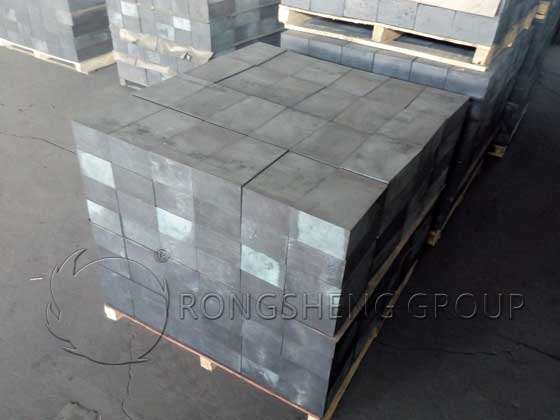The health and longevity of blast furnaces is the eternal pursuit of smelting enterprises. Regardless of the application of new materials, new technologies, new equipment, or innovative processes, the ultimate goal is to ensure that the blast furnace is in good condition. It can work efficiently, with low consumption and safety, and the longer the continuous operation period, the better. Blast furnace carbon bricks are a commonly used refractory brick product in Gaul. With the development and progress of related technologies, in recent years, the restrictive links that affect the life of the blast furnace have become more and more concentrated in the bottom and hearth of the blast furnace.

Refractory Linings’ Working Environment for Blast Furnaces
For a long time, various types of carbon bricks and ceramic cup materials have been mainly used for the lining of the blast furnace hearth. By continuously improving their quality performance to meet the requirements of extending the life of blast furnaces. However, high-intensity smelting and the continuous decline in the grade of raw materials entering the furnace have led to a large accumulation of impurities such as alkali metals and zinc in the blast furnace. The environment of the hearth is becoming increasingly harsh, which poses more severe challenges to the lining materials at the bottom of the hearth.
What is the density of blast furnace carbon bricks? Carbon brick density is the volume density of carbon bricks, which refers to the mass per unit volume of carbon refractory bricks. The bulk density index of carbon bricks is an important indicator of the density of carbon bricks. The density of carbon bricks is relatively easy to detect. In production, the density of carbon bricks is used as a test to judge the degree of sintering of carbon bricks. The higher the density of carbon bricks, the better its resistance to slag erosion. Generally, the density of carbon bricks is expressed in g/cm3 or kg/m3.
Bulk Density of Blast Furnace Carbon Bricks
According to the different parts of the blast furnace lining, blast furnace carbon bricks are divided into blast furnace semi-graphite carbon bricks, blast furnace microporous carbon bricks, and blast furnace carbon composite bricks. Blast furnace carbon bricks made of different materials have different physical and chemical indicators and different volume densities.
- Blast furnace semi-graphite carbon bricks are generally used to build the blast furnace bottom. Its bulk density is 1.5g/cm3.
- Blast furnace microporous carbon bricks are generally used for blast furnace hearth wall masonry. Depending on the part used, the bulk density is 1.65-1.7g/cm3.
- Blast furnace carbon composite bricks are generally used in the construction of blast furnace ceramic cups. According to different physical and chemical indicators, its bulk density is 2.7-2.85g/cm3.
The density of blast furnace carbon bricks is one of the important reference indicators for customers to purchase carbon bricks. Carbon bricks for different uses have different physical and chemical indicators and different bulk density requirements.
The factors that affect the bulk density of blast furnace carbon bricks include the following two aspects. One is the particle size of the refractory raw materials of the blast furnace carbon bricks and the bulk density of the raw materials. On the other hand, is the control of the production process. Therefore, when producing blast furnace carbon bricks, it is necessary to strictly select the grade of raw materials and control the particles. During the production process, the pressure of the brick press to press the bricks is controlled, and the firing of the blast furnace carbon bricks is reasonably controlled.
When purchasing blast furnace carbon bricks, more physical and chemical indicators need to be provided. Such as main component content, compressive strength, flexural strength, etc. Only in this way can refractory material manufacturers provide high-quality carbon brick products for the refractory lining of blast furnaces.